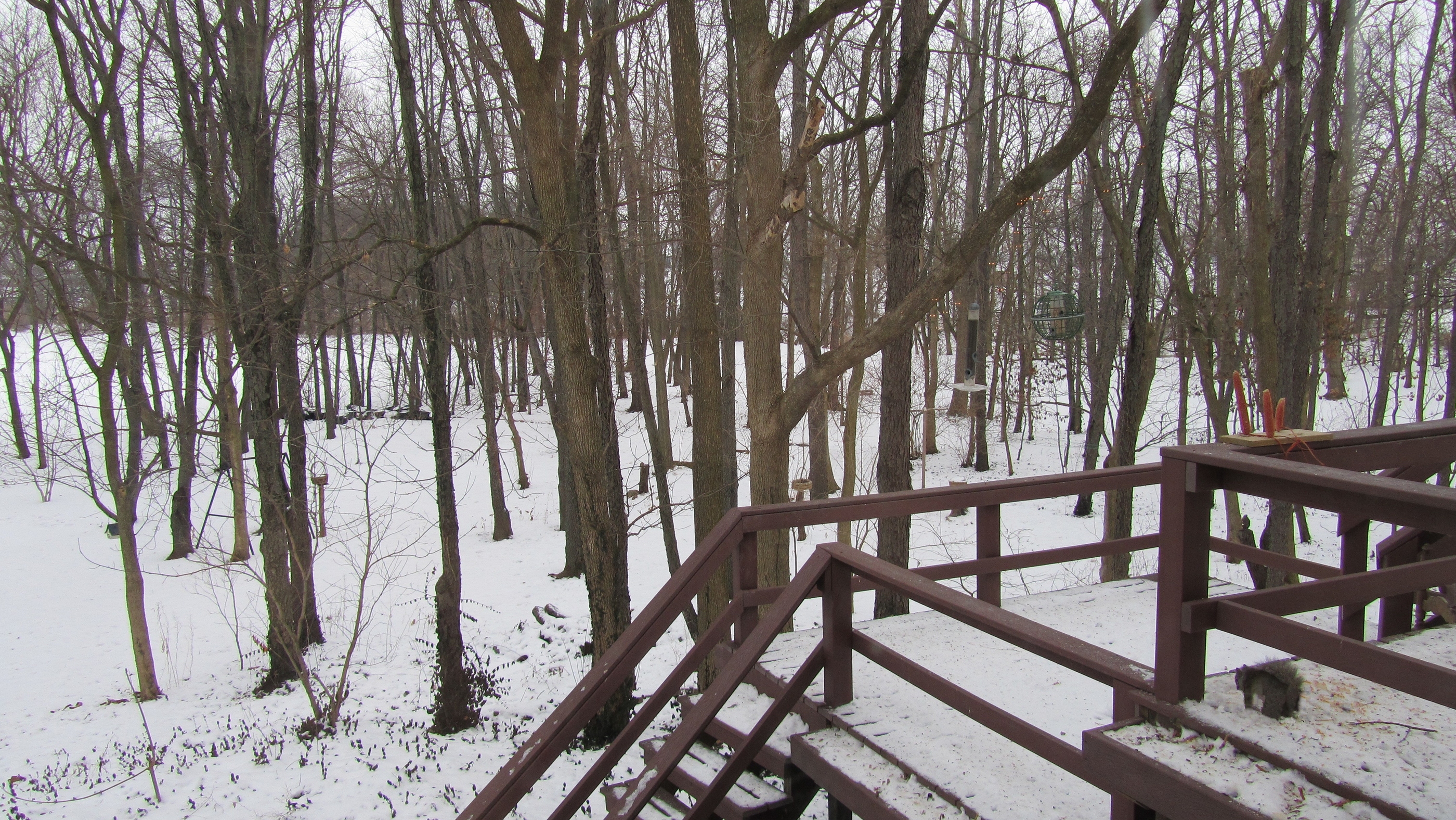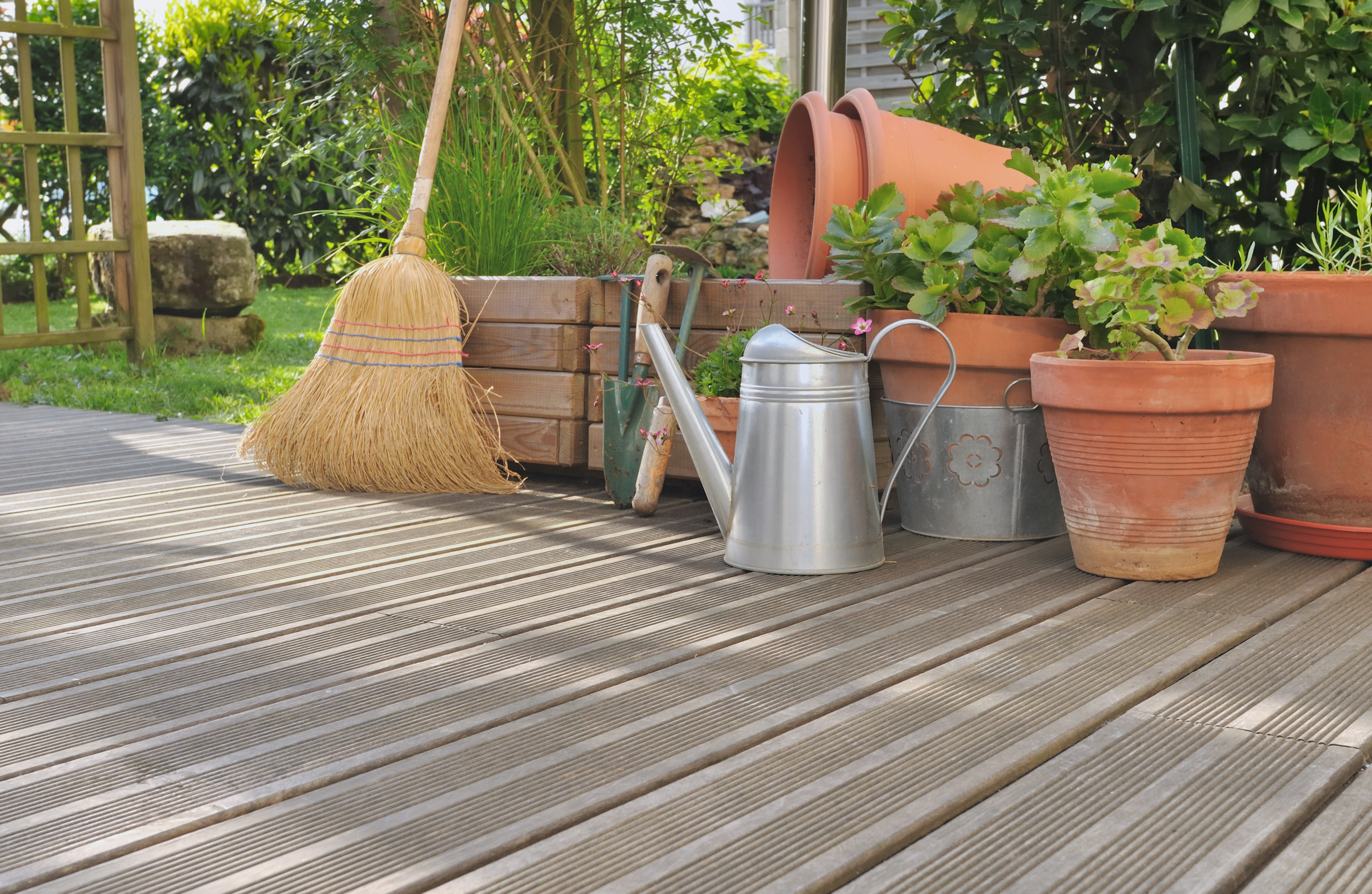Seasonal deck maintenance is crucial to having a safe, great-looking deck for year-round enjoyment. A few hours spent each season keeps your deck sealed, free of rot, and structurally sound. Here are things to look for every season to ensure your deck lasts for years to come.
Winter
When the snow begins to fall, you’re probably not thinking about your deck. But there are a few things you should keep in mind when this home addition is outside all winter.
- While snow generally doesn’t need to be removed from a well-built and maintained deck, you can do so with a broom if you like.
- For snowfall is particularly heavy, use a plastic shovel without a metal edge and remove it parallel to the boards. This minimizes the risk of scratching and damaging the material.
- If you encounter ice, using salt is not recommended as it can damage your deck. Instead, use a calcium/magnesium “safety melt” blend.

Spring
After the snow melts, it’s time to perform some routine maintenance that keeps your wood deck in great shape all year. Pick out some clear, sunny days to perform the chores that help you deck last longer and look better.
- Remove debris from between the boards of your deck. This should be done with a plastic putty knife or scraper so as not to damage the material.
- Sweep the boards to clear them of dirt and dust.
- Clean the deck with an appropriate cleanser. If you choose a power washer, be sure to go at an angle to avoid gouging the boards.
- After waiting 48 hours for it to dry, lightly sand your deck before using a seal or toner.
It’s important to note that these recommendations are for wood decks only. If you own a composite or PVC deck, simply clean and remove debris when it is dirty.

Summer
In the middle of the summer, the clear skies and warm temperatures make it the perfect time to inspect the condition of your deck. An afternoon spent looking over your deck helps you reduce potential problems before they start.
- Check the structure for rot. While small pieces can be removed and treated with preservative, major areas should be handled by a professional.
- Examine the part where the deck meets the house, which is called the ledger. Rusted lag screws and rotting ledgers are the main causes of deck collapses.
- Look for issues on the beams, posts, and joists. Cracks, major rust, and rot can weaken your other structures, exposing your deck to further damage.
- Inspect the railing. The posts should feel solid, the rails should be secure, and there should be no exposed nails or screws.
For a complete list of recommended inspection tips, consult the North American Deck and Railing Association (NADRA). They have a comprehensive deck safety checklist to help keep your deck safe year-round.
Fall
Get ahead of the new year by removing any potential issues before they spend all winter causing issues. The occasional bit of cleaning pays dividends in the long run.
- Trim plants back from the deck. You need at least a foot of clearance from trees, shrubs, and bushes to discourage rot, mold, and mildew.
- Clear debris before it gets jammed in your deck. Regularly remove fallen branches and leaves to save your deck from potential damage.
- Inspect gutters and downspouts to make sure you deck isn’t exposed to excess water.
Don’t Be Afraid To Call a Professional
Let’s face it, deck maintenance can be a lot of work even for competent DIYers. If you’d rather avoid power washer rentals and guessing how much rot is too much, contact Breyer Construction. We have decades of combined experience in building and maintaining decks.







